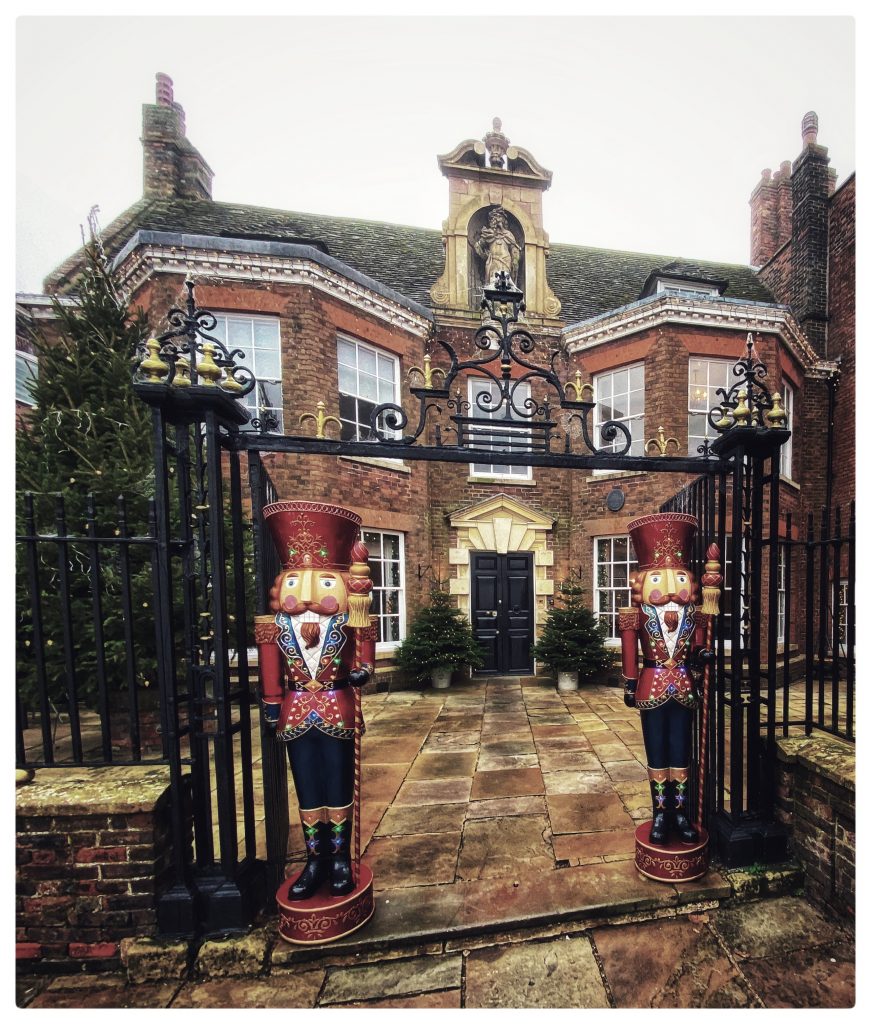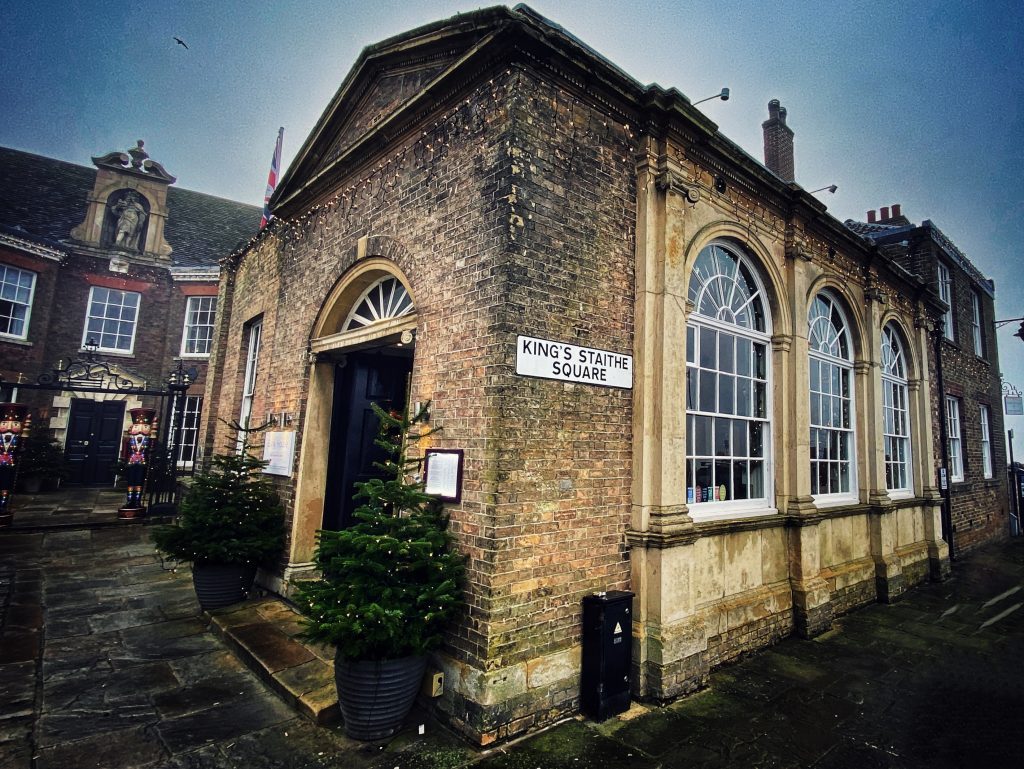Who were the two men who lived in Bank House, King’s Lynn? And what were their very different achievements?
The House
Bank House on King’s Staithe Square is a Grade II Listed Georgian Townhouse built in 1682 (now a hotel). It was built on the site of the former sixteenth century Port Tollbooth. The statue of Charles I was taken from a former Custom House.

Photo © James Rye 2021
The house was originally built by a wealthy wine merchant. He shipped imported wine downriver to the Cambridge colleges and the Bishop of Ely. The whole area of this square is riddled with 17th-century brick cellars where imported wine was stored. The West Wing was added in 1750.
The Bank
In the 1782 the Quaker, Joseph Gurney, later a founder of Barclays Bank, set up Gurney & Birkbeck’s Lynn Bank. The present day brasserie restaurant (with the three large arch windows) occupies Gurney’s purpose-built Counting House and was opened in 1788. The adjacent bar was once the bank manager’s office.

Photo © James Rye 2021
Samuel Cresswell: The Arctic Ice
Captain Samuel Cresswell (1827-1867), arctic explorer, was born in Bank House in King’s Lynn.
Cresswell entered the navy at the age of 14 in 1841. In 1848 he joined the search to find Franklin’s lost expedition that was seeking to discover the North West Passage. In 1851 the Cresswell’s ship’s crew had visual proof that the North West Passage existed. They were in sight of Melville Island (and previously open water), which the British had reached from the other direction in 1819-20. Unfortunately, because of ice conditions they were encased and finally had to abandon ship in 1853.

Cresswell, along with 24 invalids, followed his commander, McClure, on a 170 mile trek to Kellett’s winter camp located off Melville Island. Because he was in good health, Cresswell volunteered to continue overland for about another 300 miles to Beechey Island in the hope of meeting a ship.
Luckily, he succeeded in making the epic sledging journey and also actually managed to find a ship home. Cresswell set sail for home in August 1853 with proof of the existence of the North West Passage and the acclaim of being one of the first naval officers to cross it.
On 26 October 1853, a public dinner was held in Cresswell’s honour at the King’s Lynn Assembly Rooms, organised by his native townsmen. Tickets were 1 guinea each. In gratitude for his safe delivery home he gave money for the creation of a new East Window in St Margaret’s Church.
© James Rye 2021
See also: King’s Lynn’s Third Most Famous Sailor?
Sources
McGoogan, K. (2016) Discovering the North-West Passage: The Four-Year Arctic Odyssey of H.M.S. Investigator and the McClure Expedition, by Glenn M. Stein, ARCTIC
https://www.countryandtownhouse.co.uk/hotel-guide/bank-house-kings-lynn-norfolk/
https://grants.fnl.org.uk/archive-captain-samuel-gurney-cresswell-rn-1842-67
https://norfolktalesmyths.com/2021/05/20/cresswell-a-naval-officer-who-delivered-good-news/
http://www.biographi.ca/en/bio/cresswell_samuel_gurney_9E.html
https://www.lindahall.org/about/news/scientist-of-the-day/samuel-gurney-cresswell/

Thank you for linking my site to this blog – much appreciated! During the course of reading some of your other blogs I found that I not only enjoyed them but also, as a way of reciprocation, thought that some could be usefully shared to my Facebook Group – Norfolk Tales & Myths – there would be quite a few members who would also enjoy them. My plan is, subject to you not objecting, to share throughout 2022. Thanks again and my kind regards.
[…] Cresswell was born in Bank House in King’s Lynn. After joining the navy as a boy he ended up with Sir John McClure in 1849 on a trip to find both the North West Passage and Sir John Franklin’s ship that had not returned from its own search to find the elusive route through the northern ice. Cresswell was appointed as the second lieutenant and ship’s artist aboard HMS Investigator for the expedition. […]